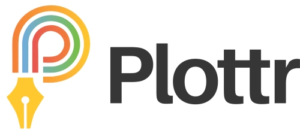 I’ve been writing professionally for a long time. I moved from working in engineering to freelancing as a technical writer in 1992. Over the years I’d developed a pretty strong process for writing non-fiction, and it included creating very detailed outlines.
I’ve been writing professionally for a long time. I moved from working in engineering to freelancing as a technical writer in 1992. Over the years I’d developed a pretty strong process for writing non-fiction, and it included creating very detailed outlines.
Along comes 2013, and I decide to try my hand at writing a novel. Imagine my surprise when creating those well-developed outlines, doing that detailed plotting, shut down my ability to finish the book. It’s as if my brain would say, “oh, you’ve already worked through this story, you don’t need to write it down”.
Argh. So I became what fiction writers call a “pantser”, as in I wrote by the seat of my pants. Oh, I needed to know who my main characters were to some extent before I got too far in. And I had a starting point and usually an ending point in my head. Sometimes I held those so clearly it was like watching a scene from a movie. But the middle stuff, the “how do these people get from Point A to Point B” journey? If I outlined that, I couldn’t write it.
I wrote and published two books working like that. One of them won some awards. I thought I had a process.
Then came the next book. And all of a sudden my process wasn’t working for me. I knew the beginning, I knew the end (sort of), I had an idea of the main characters — and I had absolutely NO idea of how to move them along. Staring at a blank page doesn’t get your book finished.
Now, there are a lot (a LOT!) of books written on the craft of writing that deal with how to plot and when to plot and what a plot is and isn’t, about story structure in general and specific kinds of story structures. I read a bunch. And each time I read one, my brain would go, “nope, that isn’t what you’re looking for”. Or I’d find one nugget of helpful advice buried in hundreds of pages of less-than-useful information.
What I had learned from writing the first two books was that even though I hadn’t planned for them to fit into any of these structures, they generally did anyway. So I was imposing structure instinctively. Which is a good thing, because as humans we like reading structured stories.
What I figured out was that while I don’t need, and in fact can’t write to, detailed outlines, I do need to have some idea of where I’m going next. I don’t need the whole bridge built, but it helps to know what the very next one or two planks are.
What I needed was a timeline. With minimal notes. Kind of like stepping stones across the river that sits between where my characters start and where they end up, more than a bridge.
Back to the craft books. And to YouTube videos. And to my writerly friends.
I looked at timeline software. I looked at mindmapping software. I looked at planning software. And I found Plottr. https://plottr.com/

I like that I can use as much or as little of it as I need at the moment. I like that I can put my character sketches and setting information in there too, creating most of my series bible. Scrivener is still my writing tool of choice, but it’s easier for me to visualize things in Plottr.
You can export from Plottr to Scrivener, but that only works in one direction (Plottr => Scrivener, or Plott => Word). Since I don’t create complete, detailed plots right off the bat, I copy and paste from one to the other so I can go both ways depending on where I’m working at the moment and insert more scenes or chapters into Plottr as I find I need them.
It’s a little glitchy sometimes. There’s a version now called PlottrPro that includes a web-based version, which sits as a useful bridge between my laptop and my iPad (I used to sync the files manually in Dropbox, the way I do for Scrivener). This new version seems to handle that much better. And the desktop version, which what I mostly used, seems to be more stable and less prone to freezing for me.
I wish I could figure out how to save back down to my laptop so that there isn’t only one version in my PlottrPro account. I think that’s on the feature list for future development.
On the whole, though, I’m quite happy with the tool. Seeing the timeline for the book, having all my character notes and scene cards and setting descriptions in one place — and one place for the entire series! — has helped me get over my brain cramp about plotting.
